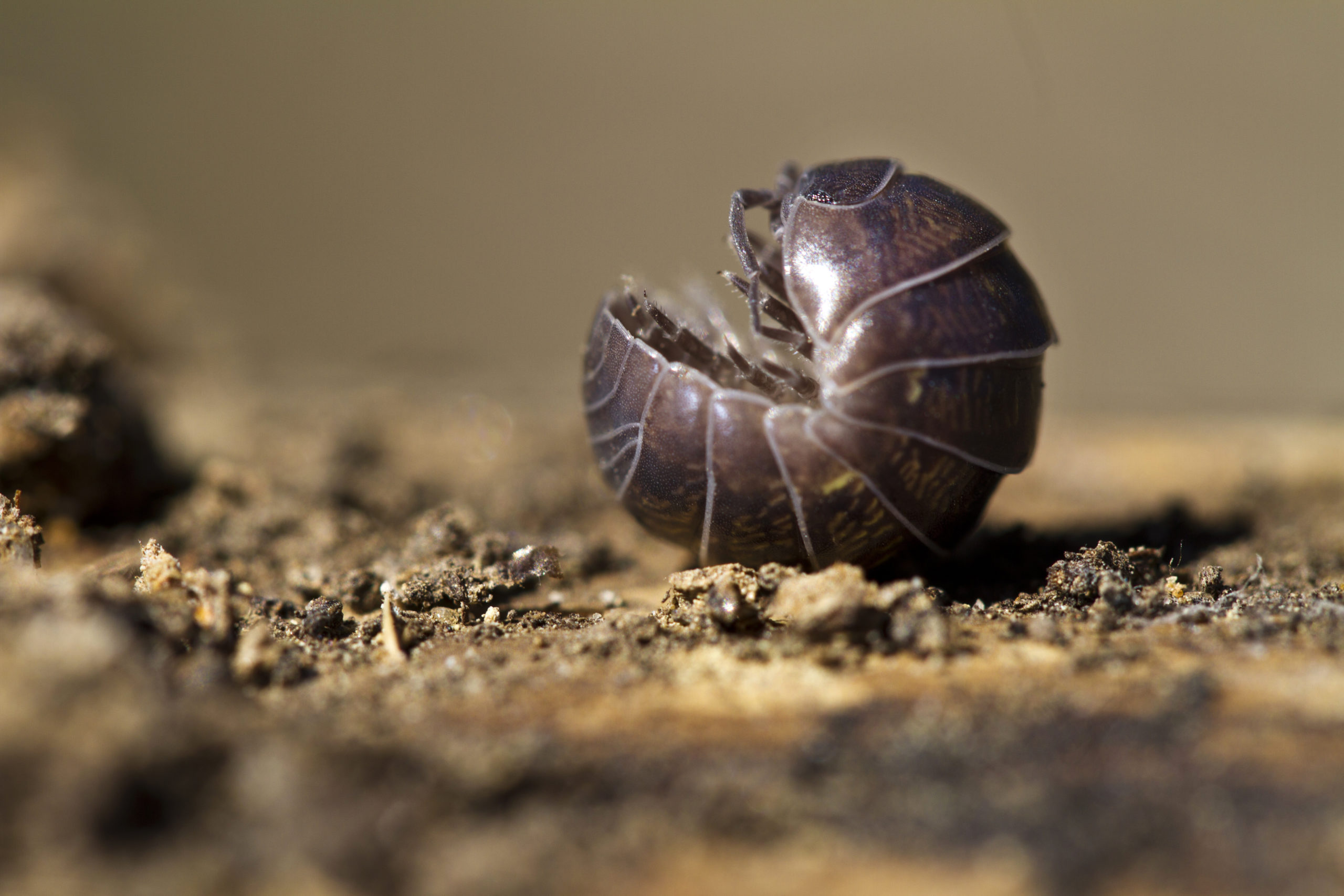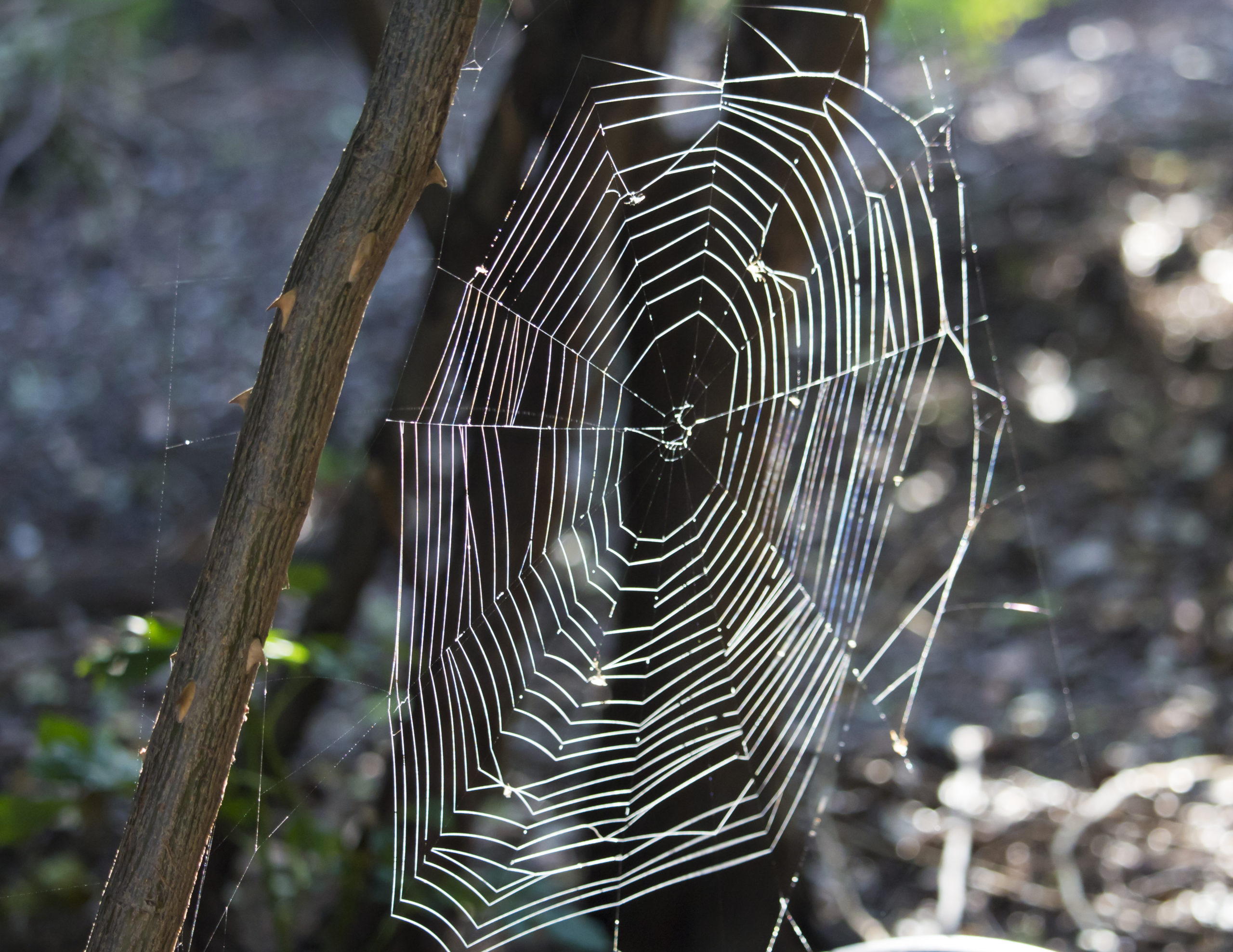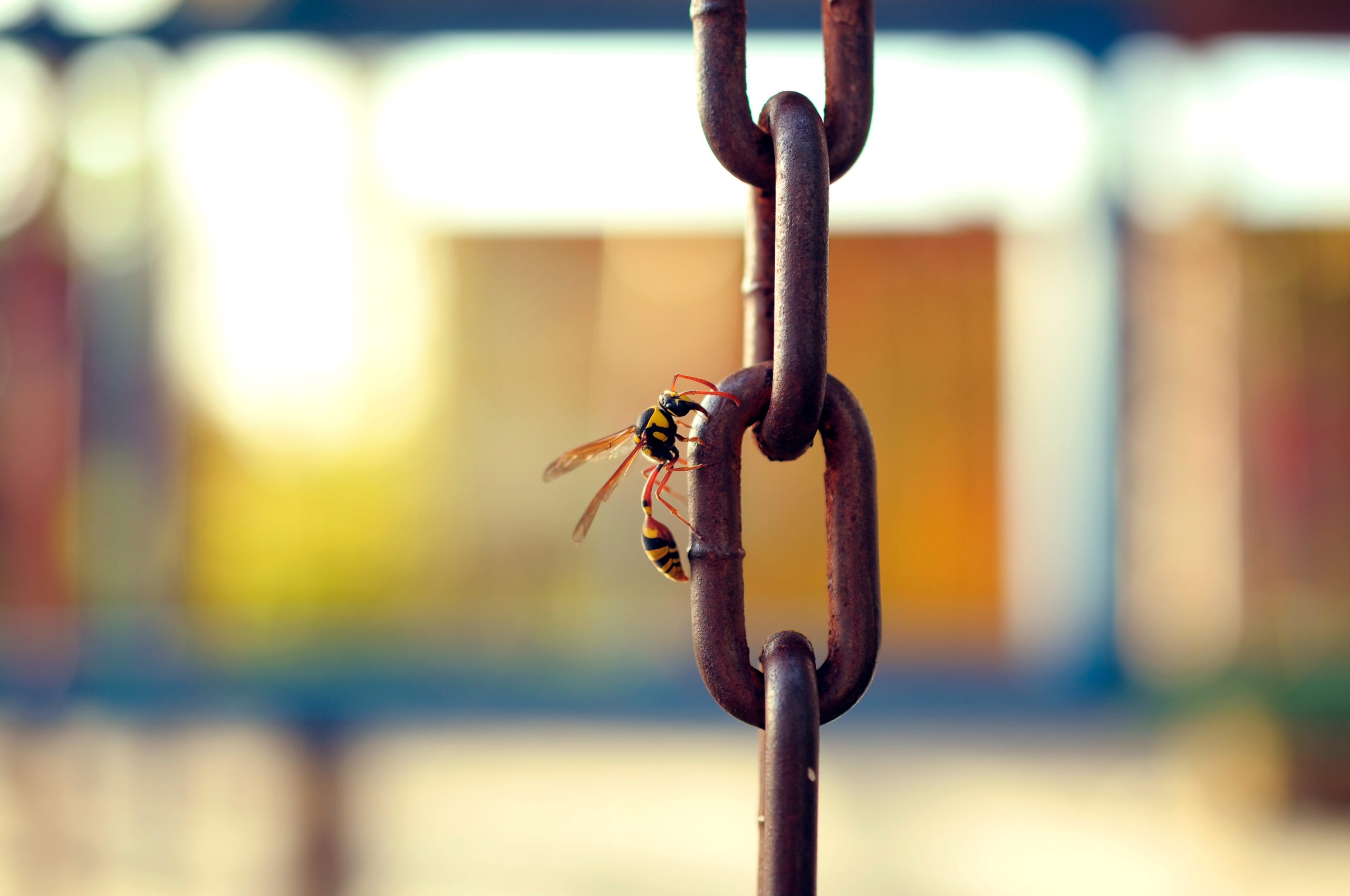5 Common Playground Pests
5 Common Playground Pests
The great outdoors has much to offer for an energetic and imaginative young child year-round. One of the greatest modern joys for a kid is the playground, a structured play area equipped with slides, monkey bars, swings, and a myriad of other activities. Play-sets can be found in different environments in a child’s life, including school, the public park, and even their own backyard! But unfortunately, one common denominator with every playground is the appearance of pests, some more so than others.
Those of us who enjoyed the hours of entertainment that a playground provides have at least one memory of being attacked by some kind of insect that made our play time a lot scarier than before. And it didn’t seem to matter which play-set we played on, since there was likely to be some kind of insect invasion in the corners of the structure. The main reason for this pattern is that pests, like any other living creature, seek shelter. A play structure is literally a playground for all kinds of pests to make their homes in and find all kinds of food sources. The amount of mess and food residue that children leave in their wake is impressive, and pests find these crumbs and spills irresistible. The type and number of pests on a play-set largely depends on its location. A playground near a wooded area will likely see way more beetles and ants than a playground surrounded by concrete. But for the purposes of this list, let’s focus on the most common pests that seem to be found in just about every playground and why they find a play-set to be the most hospitable place in nature.
Ants

The main reason why ants are often found in and near playgrounds is likely obvious if you spend a lot of time around children. The leftover crumbs, juice spills, and discarded fruit slices are a heavenly feast for these small pests. The surrounding grass, sand, or both are perfect for ants to form their anthills, which gives them a close proximity to food and another kind of shelter. They also like piles of leaves because there are often food sources in there, even if it isn’t human food. Wood mulch is another favorite of ants because of the shelter and organic matter, so any playground with that as the base is prime real estate for ants. Small black ants are the most frequent ant that invades playgrounds, and a trail of ants marching through the play structure is free entertainment for kids who stop to watch these pests work.
Not every playground has a sandbox, which may not be the worst thing. Sandboxes bring about all kinds of pests, including a few kinds of ants. One of the worst kinds of ants likes to live in the sand: fire ants. Their bites leave a fiery sensation on the site, and being bitten by multiple of them is a painful experience that no child should go through. Another type of ant that enjoys playing in the sand is, predictably, the sand ant. They make tunnels through the sand and are very persistent in pursuit of their food, which is any kind of plant. The way that sand ants attack plants is not the only reason why you don’t want them in your yard; they also have a painful sting! People who have experienced this sting liken it to a fire ant bite, so neither one is an ideal experience. One of the easiest ways to prevent any kind of ant invasion is to remove all trash from the playground, as well as keeping a close eye on the sandbox if there is one. But more on prevention methods later.
Bees

Bees are attracted to playgrounds for a few reasons. One is if there are flowers directly around the play-set, and the bees decide to take a detour from their pollinating to the playground. Another is tall grass, which attracts all kinds of pollinators in general. And the third, which attracts most pests in general, is the amount spills that are likely all over the play-set. Sweet juice and popsicle spills are irresistible for bees. Luckily, bees are not aggressive at all and don’t go after people just for fun. The danger is if a child accidentally steps on or grabs a bee and gets stung, or if they are too curious for their own good. You can always tell your children that bees are our friends when they are pollinating the flowers, so it’s important to not touch them on or off the flowers. But many kids will scream and run away as soon as they see a bee anyway.
The type of bee you really don’t want near a playground is the carpenter bee. These are the large black bees that have a patch of fuzzy yellow on their neck. Thankfully, the size of these bees doesn’t determine their danger level; carpenter bees are extremely docile and will only sting when they are directly attacked. But the real danger of having carpenter bees nearby is that they love to burrow into wood. They make small holes to crawl inside and lay eggs, which they then stay with and protect until the eggs hatch and the baby bees can survive alone. If the play structure is made of wood, chances are good that carpenter bees are ready to make their home in there if they haven’t already. A bee sting is painful and scary for a child, so it’s important to keep an eye out for any bees or hives and keep the bee population in check.
Pill Bugs

Pill bugs aren’t a traditional pest, but they are often found within the mulch or leaves on a playground. They can be found by digging through the organic coverings on the ground, especially after a storm. These tiny arthropods are beloved by many children, who love to pick them up and hold them gently as the creature slowly rolls into an un-penetrable ball. Pill bugs, or roly-polies, are non-insect arthropods that eat decaying matter. They don’t bite humans at all, so they are not dangerous to children.
They enjoy living in damp or decaying leaves, logs, and soil, which is common during the rainy season. Since they are so small and aren’t usually found in groups, they are easy to miss unless their hiding spots are disturbed. Pill bugs are also nocturnal, so they won’t be found being very active during the day. There is not much to do to prevent pill bugs since they don’t live in colonies or pose a threat to people or structures, but there is not really a reason to want pest control for pill bugs anyway.
Spiders

On the other hand, spiders are not a fan-favorite on playgrounds. They are beneficial in how they trap and eat annoying insects, but they become a problem when the eggs hatch and the play-set is suddenly infested with tons of arachnids. Spiders also love to hide in mulch and piles of leaves, since there is sure to be an insect feast in these areas. The web-spinners will set up shop in every corner and crevice of a play-set, which has the potential of being found by a very unlucky child. Think about how many corners there are on a playground: around the slide, the connecting joints on a swing-set, in between monkey bars. It seems like a playground is a spider’s – well, playground! They can get onto the playground in a few different ways. One is by blowing in with the wind, gently floating on it and using their web as a parachute. Another is if there are trees very close to the play structure. Spiders can easily crawl along a tree branch and drop down to their desired area.
Spiders are attracted to all kinds of insects, so it is unlikely that you will never encounter a spider on an outdoor playground. And many of them go unnoticed when they stick to their hidden corners and don’t bother anyone. But the big issue is when a very unfriendly spider decides that the playground is the home for them. The two most dangerous spiders in the U.S. are the brown recluse and black widow. The bites from these spiders are not immediately deadly, but problems can arise if the bite goes untreated for a long time. Most people have a natural aversion to spiders due to their creepy appearance, so many kids won’t want anything to do with them. But it’s important that they know to never touch a spider, especially if they happen to find one of these two, since being bitten is no fun.
Wasps

This is one pest you definitely don’t want near a playground. Wasps are not only aggressive when their nest is threatened, they can also sting multiple times unlike bees. There are many reasons why wasps may be drawn to the play-set. One of the most common is the presence of sweet smells and substances. Remember the spilled juice and popsicles that attract bees? Wasps have the same favorite foods. Wasps also like to be near standing water for their water source, so any puddles will attract them as well. Wasps are major pollinators, even though that isn’t what they’re known for, so flowers around the playground are also attractive to them.
Wasps will build their nests where there is reliable shelter and covering. This means that a wasp nest would be up in the roof of the play structure, if there is one, or in any type of covering on the playground. Horrifyingly enough, they can be built underneath slides that aren’t used every day. So the next person who goes down the slide may be met with a lot of angry wasps should they choose to go underneath the slide right after! Wasps favor open space around their nest, which is why their home in the roof of the play structure is perfect: shelter for the nest with the availability of open space and plenty of food for the colony. Wasps should never be left alone in a playground, but how do we get prevent them in the first place? Let’s talk about some effective methods for preventing wasps and other pests from ruining children’s fun on the playground.
How Do I Keep the Play-Set Pest-Free?
If you are in charge of a play-set used by multiple children, or if you have one in your own yard, you may be wondering how you can prevent it from being overrun by insects if they’re so persistent. One of the most helpful actions you can take is to make sure no trash or food is left on the play equipment after the kids leave and find something else to occupy their time. The main attractor for all pests is food residue, so throwing away all trash will be a great help. Encourage the kids to clean up after themselves with a lesson about how they can keep bugs away with this simple act. If possible, keep the trash cans away from the playground so it’s not a straight shot for the pests to go from the trash to the playground or vice versa.
Also, power wash or hose down the play equipment somewhat often when the kids are done for the day. This will wash away any lingering spider webs and small nests, as well as any sticky spills. If the play-set has wood, you can seal any holes with all-weather sealant to prevent carpenter bees among other wood-loving pests. If you have a sandbox, replacing the sand every so often removes any insect hills lurking underneath. Finally, pest control services are always an option. Our EPA-approved services will ensure that the play-set is full of kids having fun, not pests making their home.
Citations
How to get rid of sand ants, & what to know!. (n.d.). ERoaches. Retrieved May 12, 2022, from https://eroaches.com/how-to-get-rid-of-sand-ants/
Playground ants: Citronella or large yellow ants, acanthomyops interjectus, and field ants, formica sp. (2010, May 3). Bug of the Week. Retrieved May 11, 2022, from https://bugoftheweek.com/blog/2013/1/27/playground-ants-citronella-or-large-yellow-ants-iacanthomyops-interjectusi-and-field-ants-iformica-spi-missing-link-and-videos
Proven ways to keep bees, spiders, ants, birds & other pests away from your backyard swing set. (2020, June 15). Dad Fixes Everything. Retrieved May 11, 2022, from https://dadfixeseverything.com/swing-set-pests/
Stadler, R. (2015, June 12). Get rid of ants in your sandbox. Earthkind. Available at https://www.earthkind.com/blog/ants-in-sandbox/ (Accessed on May 11, 2022).
The Backyartisan Team. (2022, March 7). How to keep your playset free of pests and insects. The Backyartisan. Available at https://backyartisan.com/playset-pests/ (Accessed on May 11, 2022).
8 Creative Ways to Have a Pest-Free Fourth of July
8 Creative Ways to Have a Pest-Free Fourth of July 8 Creative Ways to Have a Pest-Free Fourth of July Summary: The Fourth [...]
A Simple Guide to Preventing Stinging Pests
A Simple Guide to Preventing Stinging Pests A Simple Guide to Preventing Stinging Pests Summary: Stinging insects are more active in warm weather, [...]
These 10 Natural Mosquito Repellents Can Actually Help
These 10 Natural Mosquito Repellents Can Actually Help These 10 Natural Mosquito Repellents Can Actually Help Summary: Natural mosquito repellents are easier to [...]
How to Get Rid of Carpet Beetles
How to Get Rid of Carpet Beetles How to Get Rid of Carpet Beetles Summary: Carpet beetles are sneaky pests that don’t usually [...]
How Do Roaches Affect Asthma and Allergies?
How Do Roaches Affect Asthma and Allergies? How Do Roaches Affect Asthma and Allergies? Summary: It’s no secret that pests impact human health, [...]
These 5 Carnivorous Pests Might Surprise You!
These 5 Carnivorous Pests Might Surprise You! These 5 Carnivorous Pests Might Surprise You! Summary: There are many eco-friendly ways to prevent pests, [...]

